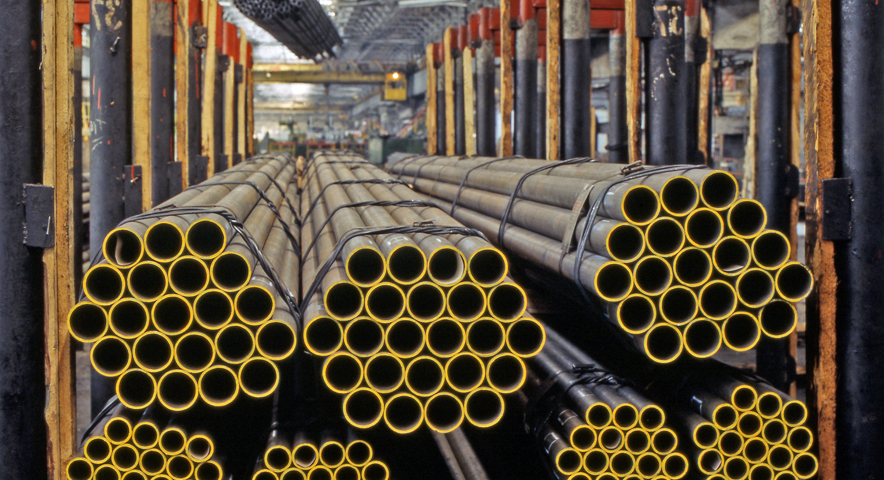
They’re the most commonly used carbon steel pipe types in industry today, and they’re very similar.
But while the differences between A106 and A53 are few, they matter a great deal in terms of when and where each is specified.
To ensure you purchase the correct pipe and receive it quickly, two things are a must: A basic understanding of seamless and welded seam pipe, and providing detailed specs.
A106 vs. A53 — Welded vs. seamless steel pipe
If you read the ASTM and ASME standards for A106 and A53 pipe, you’d quickly observe how similar they are in terms of chemical makeup and manufacture. The most important difference is that pipe meeting the A106 standard must be seamless while pipe meeting A53 can either be seamless or welded.
Welded seam pipe is made by curling a steel plate into a cylinder and then joining the edges via a weld. Seamless pipe is made by piercing cylindrical bars of steel through the middle while it’s hot, creating the same shape but without a seam.
The reason for the difference lies in the suitable applications for each type. A53 pipe is best suited for transport of air, water, steam and oil in low- and medium pressure applications across the industrial spectrum. It’s also commonly used as structural steel.
A106 pipe is formulated specifically for high-temperature and high-pressure service, usually in power generation applications. High-pressure, high-heat service environments put added stress on pipe, so seamless pipe types are preferred in those settings since they’re at less risk of failure under stress than their welded counterparts.
Differences in chemical makeup
In addition to the way the A106 and A53 standards dictate pipe manufacture, the standards feature slight differences in chemical makeup. Refer to our A106 vs. A53 comparison chart to see them all, but the most noteworthy difference is the presence of silicon in A106 pipe and its absence in A53.
Silicon as an alloying element improves heat resistance in A106 pipe, which is rated for high-temperature service. Without it, regular exposure to high temperatures can weaken pipe over time, increasing its risk of failure.
The A106 and A53 standards also include varying amounts of sulfur and phosphorus depending on the grade. These elements are normally considered impurities in steel, so their incorporation in piping is minimal. However, the trace amounts of these elements add machinability to steel pipe.
Purchasing A106 vs. A53
When buying A106 or A53 carbon steel pipe, clarity is the most important factor. Usually whoever does the actual purchasing is not a piping expert. They’re often buyers working from a document provided by an engineer.
In cases where specs are not clear, a pipe seller can help a buyer determine what is needed by asking questions. However, this can take added time and the buyer may not know the answers. The pipe sale quickly turns into a game of phone tag.
To avoid this, buyers should make sure specs are crystal clear. Also, keeping good records will add efficiency to piping procurement. If a firm regularly purchases A106 or A53 pipe, that information should be kept handy as a reference.
At American Piping Products, our piping experts are trained to assist buyers in determining whether A106 vs. A53 is the right pipe for their application. If you already know what you need, use our product lookup to see if it’s in stock. We keep the industry’s best inventory of piping products in yards in Houston and Chicago, well-placed to quickly deliver whatever you need, wherever you are.
If you’re still researching suppliers, our steel pipe buyer’s guide contains information about piping applications, industry organizations and standards and tips to make sure your purchase is as smooth as possible.

